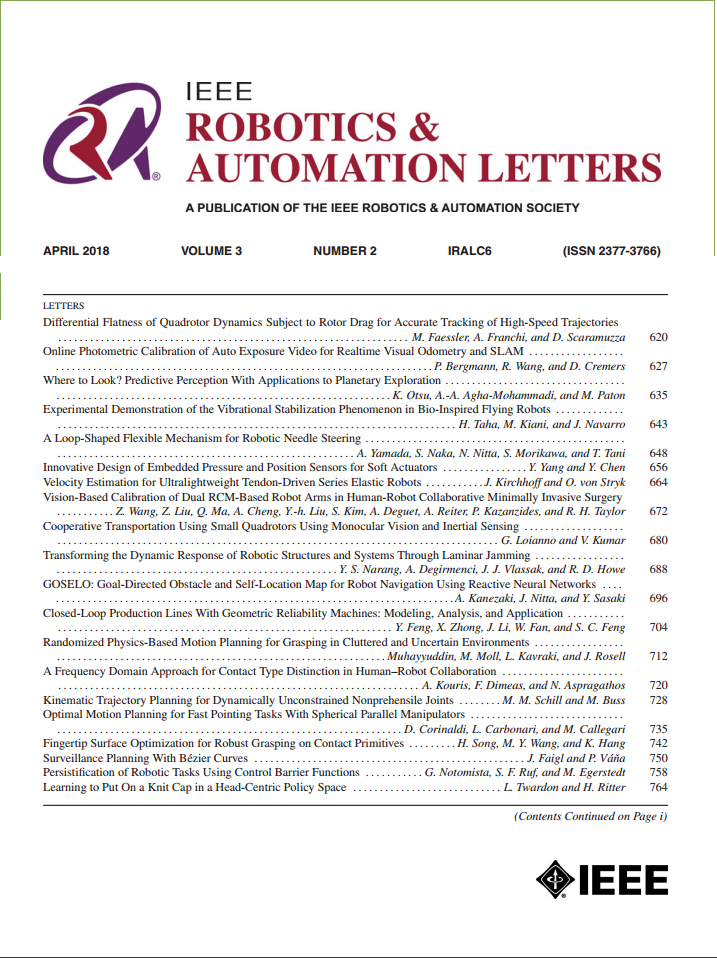基于视觉的城市环境三维语义占用预测
IF 4.6
2区 计算机科学
Q2 ROBOTICS
引用次数: 0
摘要
语义场景理解对于自动驾驶系统至关重要,而3D语义占用预测是一项关键任务,因为它提供了车辆周围环境的几何和可能的语义信息。大多数现有的基于视觉的占用估计方法依赖于3D体素标签或分割的LiDAR点云进行监督。这限制了它们的应用到3D激光雷达传感器的可用性或昂贵的体素标记。虽然其他方法只依赖于图像进行训练,但它们通常只使用少数连续图像进行监督,并优化代理任务,如体积重建或深度预测。本文提出了一种仅使用视觉数据进行语义占用预测的新方法。我们利用序列的所有可用训练图像,并使用束调整来对齐图像并估计相机姿势,然后我们从中获得深度图像。我们从预训练的开放词汇表图像模型中计算语义地图,并生成占用伪标签,以显式优化3D语义占用预测任务。在没有任何手动或基于激光雷达的标签的情况下,我们的方法预测了完整的3D占用体素网格,并在没有标签的训练方法中实现了最先进的3D占用预测结果。本文章由计算机程序翻译,如有差异,请以英文原文为准。
SfmOcc: Vision-Based 3D Semantic Occupancy Prediction in Urban Environments
Semantic scene understanding is crucial for autonomous systems and 3D semantic occupancy prediction is a key task since it provides geometric and possibly semantic information of the vehicle's surroundings. Most existing vision-based approaches to occupancy estimation rely on 3D voxel labels or segmented LiDAR point clouds for supervision. This limits their application to the availability of a 3D LiDAR sensor or the costly labeling of the voxels. While other approaches rely only on images for training, they usually supervise only with a few consecutive images and optimize for proxy tasks like volume reconstruction or depth prediction. In this paper, we propose a novel method for semantic occupancy prediction using only vision data also for supervision. We leverage all the available training images of a sequence and use bundle adjustment to align the images and estimate camera poses from which we then obtain depth images. We compute semantic maps from a pre-trained open-vocabulary image model and generate occupancy pseudo labels to explicitly optimize for the 3D semantic occupancy prediction task. Without any manual or LiDAR-based labels, our approach predicts full 3D occupancy voxel grids and achieves state-of-the-art results for 3D occupancy prediction among methods trained without labels.
求助全文
通过发布文献求助,成功后即可免费获取论文全文。
去求助
来源期刊

IEEE Robotics and Automation Letters
Computer Science-Computer Science Applications
CiteScore
9.60
自引率
15.40%
发文量
1428
期刊介绍:
The scope of this journal is to publish peer-reviewed articles that provide a timely and concise account of innovative research ideas and application results, reporting significant theoretical findings and application case studies in areas of robotics and automation.
 求助内容:
求助内容: 应助结果提醒方式:
应助结果提醒方式:


